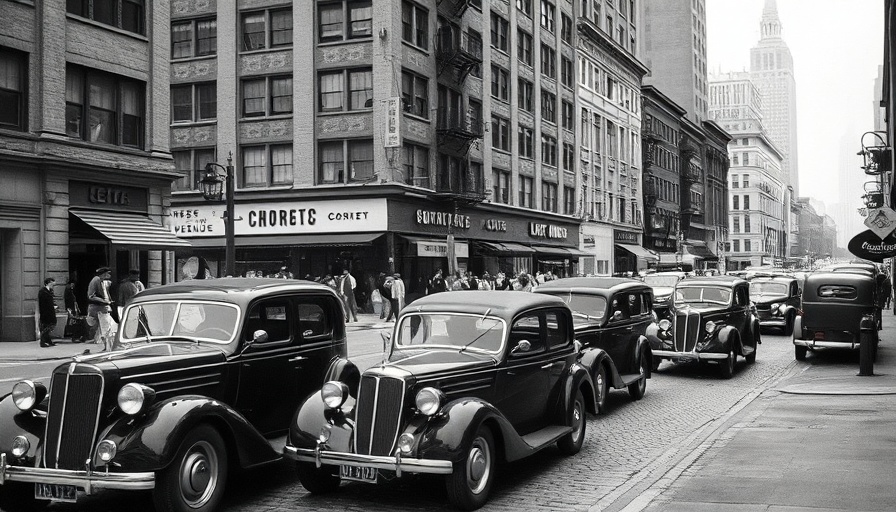
Understanding the Unique Evolution of Seventh Avenue South
Seventh Avenue South is not just a thoroughfare; it's a living history that reveals the changing urban landscape of Greenwich Village. Unlike the surrounding streets, which display remnants of the 18th and 19th centuries, Seventh Avenue South was officially constructed in the early 20th century and completed in 1917. This transformation marked a significant shift, as it extended Seventh Avenue to enhance automobile access from Penn Station to the Financial District, facilitating the emergence of the IRT subway line. This development, however, came at a cost, as many buildings were demolished or altered, giving rise to the peculiar triangular-shaped lots that we see today.
The Tales Hidden Within Triangular Lots
These oddly shaped lots along Seventh Avenue South tell stories of resilience and adaptation. Many were developed into small ‘taxpayer’ buildings—structures built primarily to generate enough income to cover property taxes. For instance, what once was a utilitarian building occupied by a defunct sandwich chain evolved into Little Ruby’s, an Australian restaurant contributing to the vibrant culinary tapestry of the area. Similarly, numerous commercial havens emerged in these spaces, reflecting not just economic shifts but also the cultural evolution of the neighborhood.
Architectural Oddities: From Sandwich Shops to Haunted Restaurants
One particularly intriguing site is 91 Seventh Avenue South, known for its rooftop skeletons. Originally built on a triangular lot, this building has hosted various tenants, from the renowned Limelight Cafe to the infamous Jekyll & Hyde Club, which embraced its haunted theme to attract a curious crowd. The evolution of this property underscores the unique charm of Seventh Avenue South, where each structure carries the memories of its past.
Preservation Efforts and the Importance of Historical Context
As developments continue to reshape Seventh Avenue South, preservation efforts highlight the importance of maintaining its historical aesthetic. Organizations like Village Preservation actively document these changes through extensive archives of historic images. Such efforts allow communities and visitors alike to appreciate the intricate tapestry of architectural history that characterizes this route. Acknowledging the variety of commercial spaces not only preserves the past but also fosters a deeper connection to the experiences of those who walked these streets before us.
As Seventh Avenue South continues to morph in response to modern demands, it’s vital to remember its unique history and the stories encapsulated in its buildings. With each passing year, this avenue offers an eclectic glimpse into our past while paving the way for the future of New York City’s vibrant culture.
 Add Row
Add Row  Add
Add 




Write A Comment